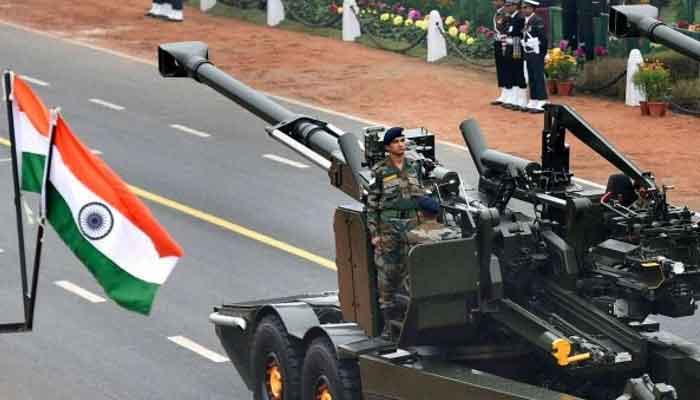India’s next attack is coming
After India’s defeat at Galwan Valley, Pakistan must be prepared for India’s next attack
India’s lack of aggression in the aftermath of the Galawan Valley skirmish in which over 20 Indian soldiers were bludgeoned to death does not mean India is done with the episode. But how it reacts will almost certainly have implications beyond India or China.
India may be developing an expertise in how to back out of fights that it starts – as it did at Balakot last year, and as we are seeing in Ladakh today. But under the Ajit Doval Raj, India seems to have no idea as to how to be a normal country at peace with the international boundaries and borders of its neighbors.
To try to understand the China versus India standoff in the Kashmiri region of Ladakh, maybe we have to go beyond the obvious. Obviously, India’s right-wing extremist government has helped create a narrative of aggression that has problematized the Indian republic’s long-standing expansionist instincts. But is the RSS / BJP really the answer to every problem in South Asia or the world? To try to go past this, I jumped onto the Stockholm International Peace Research Institute (SIPRI) military expenditure database.
One of the benefits of using the SIPRI military expenditure database is the ability to be able to contextualize what any given country spends on its military, relative to another. Indeed, this is the benefit of a database, by very definition.
The SIPRI military expenditure database reports a number of metrics, including total expenditure in 2018 US dollar terms. Can you guess how much more than China spent on its military in 2019 than India? China spent $261 billion. India spent $71 billion. China spent nearly four times what India spent. The total US dollar differential is about $190 billion. What does that mean?
That is enough money to pay for India’s Rafale fighter jet deal 21 times over (or to buy 777 Rafales), at the same rate as what India paid France for the 36 planes that have been advertised as the solution to India’s air capabilities. It is also enough money to pay for nearly 10 times the number of toilets that PM Narendra Modi sought to build in India in his ambitious Swachh Bharat campaign for clean living in India.
It is budget season, and the temptation to look at the same number for Pakistan was too much to resist. According to the SIPRI database, Pakistan spent over $11 billion. India therefore spent more than six times what Pakistan spent. The differential in spending between India and Pakistan is about $60 billion. That is enough money to pay for ten Peshawar BRTs (given that the Asian Development Bank cites a total cost of $587 million for the Peshawar BRT). It is also enough money to buy 416 F-35A Lightning II aircraft (based on the price Poland is paying for the multi-role aircraft).
How should we interpret these differentials in military spending? The easiest is to declare the fight over. They have more money. They will win. Let’s pack it up, shall we?
The other is to dig a little deeper. The differential in military spending between China and India is so vast that it makes sense to try to see the last time that China was spending only twice as much as India is spending today. That was way back in 2010, or exactly a decade ago, when China spent $143 billion versus India’s $71 billion today. This is important for a number of reasons. In the decade since, India’s GDP has been growing. So in terms of the possible rate of catchup, this decade-long difference in getting to even half of what China is capable of spending, says a lot about how wide the gulf is between these nations.
Now what about Pakistan and India? Well, India was spending twice the $11 billion that Pakistan spent last year so far back that you really need to start jogging the SIPRI database. All the way back to 1997, when India spent $23 billion on its military. That is a full 23 year long gap.
These data points are useful but they aren’t the full story. The full story is that even back in the late 1950s, when neither China, nor India were growing as economies, the fight for territory in the Himalayas was on. In the 1962 China-India war, India ceded territory after losing a war to the Chinese. All these years later, India continues to make claims that it cannot live up to – either territorially or militarily.
Meanwhile, despite the agony that all Pakistanis feel for what happened in 1971, never has Pakistan ceded territory to India (note: the founding of Bangladesh was not ceding of territory to India – no matter how stupid some Pakistanis may be in how they speak of modern Bangladesh as an annex or proxy for India. Bangladeshis are as fiercely protective and proud of their national identity with respect to India as they are with respect to Pakistan).
Unlike its one-and-done fight against China, India has engaged in four wars with Pakistan, all of them rooted in and initiated by India’s denial of the international system, its rejection of dialogue and multilateralism and its foundational expansionist tendencies. Its version of victory after Balakot was securing the release of a downed pilot. This is not meant as a put down of India. Contempt is a poor substitute for reason and decency. We should never indulge it, even with India’s religious extremist leadership.
From the Pakistani vantage point, the heart of Pakistan’s problem with India is neither religion, nor territory, nor competition. It is very simply a battle for survival. Kashmir, and the principle of the unfinished process of independence that began in 1947, but was denied to the people of Kashmir, is an existential issue. It will not go away.
What is remarkable is how Pakistan has managed to sustain a credible defence against a giant nation. The cost of this remarkable feat has been enormous and immense. The people of Pakistan have suffered immensely in the struggle to keep Pakistan safe and secure. The country’s human development indicators are the best proof of this suffering.
The war that was waged on Pakistan from within, with support from abroad, in 2007 nearly broke the country in a way that was different and perhaps more profound than even 1971. By 2015 when the Lashkar-e-Jhangvi and TTP’s backs were finally broken and domestic peace seemed like a real possibility, it was difficult to imagine how soon Pakistan would be reinserted into a defensive posture.
But that is where Pakistan is today, in part thanks to India’s sad slide into nationalist and religious extremism. Indian aggression across the LOC, in Gilgit-Baltistan, through violent extremists, terrorists and separatists are not hypotheticals. They are taking place, almost on a daily basis.
Many of us often ask when Pakistan will turn its attention to tending to the needs of its people. We blame corrupt politicians, unfeeling bureaucrats, inefficient judges and power-hungry generals. Of course, we have much to correct here at home. But Pakistan occupies the most dangerous neighborhood in the world – and it is beset by an enemy that does not know anything but war.
After India’s defeat at Galwan Valley, Pakistan must be prepared for India’s next attack. It is almost certainly going to be directed at this country.
The writer is an analyst and commentator.
-
 Prince Harry’s Relationship With King Charles 'changes' With Archie, Lilibet’s UK Doors Opening
Prince Harry’s Relationship With King Charles 'changes' With Archie, Lilibet’s UK Doors Opening -
 Sara Waisglass Addresses Fans Concerns About Recasting In 'Ginny & Georgia'
Sara Waisglass Addresses Fans Concerns About Recasting In 'Ginny & Georgia' -
 Tim Allen Reflects On Stepping Into Mentorship During 'Home Improvement' Gig
Tim Allen Reflects On Stepping Into Mentorship During 'Home Improvement' Gig -
 Royal Tensions Rise As King Charles Navigates Prince Harry, William Feud
Royal Tensions Rise As King Charles Navigates Prince Harry, William Feud -
 Katie Bates Husband Travis Clark Confesses He Cheated On Her
Katie Bates Husband Travis Clark Confesses He Cheated On Her -
 Andrew Makes Life As Newly Stripped Commoner Offensive To The People
Andrew Makes Life As Newly Stripped Commoner Offensive To The People -
 Kansas Woman Loses $255,000 In Gold In FBI Impersonation Scam
Kansas Woman Loses $255,000 In Gold In FBI Impersonation Scam -
 Prince Harry Arrives In UK To Fight His Phone Hacking Case
Prince Harry Arrives In UK To Fight His Phone Hacking Case -
 Nick Jonas Attempts To Take Break From Jonas Brothers With Upcoming Solo Album?
Nick Jonas Attempts To Take Break From Jonas Brothers With Upcoming Solo Album? -
 Hayden Panettiere Gets Candid About Putting Life Story On Paper
Hayden Panettiere Gets Candid About Putting Life Story On Paper -
 'Ted Lasso' Star Reveals Real Wish For Season Four Story
'Ted Lasso' Star Reveals Real Wish For Season Four Story -
 Peter Claffey 'just Hoping' For THIS Ahead Of 'Game Of Thrones' Spinoffa
Peter Claffey 'just Hoping' For THIS Ahead Of 'Game Of Thrones' Spinoffa -
 Sophie Turner Reflects On Life After Motherhood: 'Really Nice'
Sophie Turner Reflects On Life After Motherhood: 'Really Nice' -
 Royal Expert Makes Bombshell Claim On How Late Queen Tried To Protect Andrew
Royal Expert Makes Bombshell Claim On How Late Queen Tried To Protect Andrew -
 81-year-old Florida Woman Arrested After Chilling Murder Plot
81-year-old Florida Woman Arrested After Chilling Murder Plot -
 Cardi B Scores Major Earn Against Offset In Legal Battle
Cardi B Scores Major Earn Against Offset In Legal Battle




